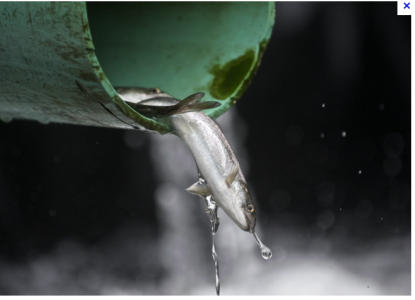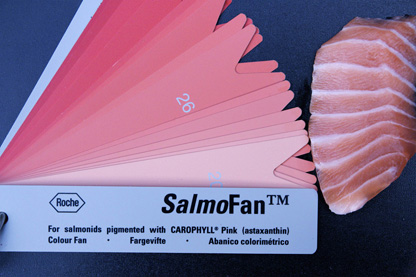Fish Farming:
A Poor Economic Benefits Profile
A Poor Economic Benefits Profile
 In this graph you can see salmon feedlots have never been big employers in BC compared against the common property fisheries.
In this graph you can see salmon feedlots have never been big employers in BC compared against the common property fisheries.
And while the BC aquaculture industry claims to employ over 5,000, Fisheries statistics indicate only 3,316 employed in aquaculture in ALL OF CANADA in 2015.
And when an industry generates $600-800 million annually (as does salmon aquaculture in B.C. according to Prov. gov’t figures), producing only a few thousand jobs is very weak job creation performance. This speaks to how aquaculture contributes poorly to the B.C. economy – even before you consider where the profits go (98% of fish farms are Norwegian owned), and the fact that Canadian taxpayers PAY for losses experienced by fish farmers when stocks are ordered culled (due to infestation with ISA virus for example).
That’s right – WE PAY!!
Fish Farm Quarantined After Suspected ISA Outbreak →
June 20, 2012 (CBC)
An outbreak of ISA at a Cooke facility in Shelburne in February resulted in the company destroying 700,000 fish. The federal government will compensate the company for those fish, up to a maximum of $30 per fish, but Halse said no money has been paid to Cooke yet…
Problems With Salmon Aquaculture
Our oceans are in trouble. Uncontrolled fishing has brought many species to the brink of extinction, while pollution from farms, cities, and factories is making other commercially important seafood unsafe to eat.
Many thought that aquaculture held the answer to these problems. Yet, practices differ sharply from country to country, making some types of farmed seafood unsustainable or unhealthy. Salmon, perhaps the most popular type of fish raised in sea farms, poses several problems for the environment and public health:
- The waste from millions of captive fish empties directly into the ocean, polluting the water with untreated sewage, toxic chemicals, and other wastes
- Approximately three million genetically identical salmon escape from their pens each year, interbreeding with, and often out-competing populations of genetically superior wild salmon
- Captive farmed salmon make ideal hosts for highly contagious diseases and parasites; escapees spread them to wild fish
- As they grow, carnivorous and voracious farmed salmon need increasing amounts of wildcaught fish for food, thus competing directly with humans and fish species for this valuable yet diminishing resource. Currently, it takes the equivalent of three pounds of fish from the world’s oceans to make one pound of farmed salmon.
How Did This Happen?
 In 1984, the Science Council of Canada unveiled their industrial aquaculture plan. Encouraged by weaker restrictions, Norwegian companies began claiming sites to raise their salmon in British Columbia waters, lured by close proximity to the US market. Norwegian politicians warned Canada there were high risks. Canada knew ownership of salmon in the ocean was outside the Constitution of Canada, but that did not stop anyone.
In 1984, the Science Council of Canada unveiled their industrial aquaculture plan. Encouraged by weaker restrictions, Norwegian companies began claiming sites to raise their salmon in British Columbia waters, lured by close proximity to the US market. Norwegian politicians warned Canada there were high risks. Canada knew ownership of salmon in the ocean was outside the Constitution of Canada, but that did not stop anyone.
Salmon Feedlots: This Was Not a Mistake →
Alexandra Morton (blog)
The United Fisherman’s and Allied Workers Union UFAWU published a newspaper called THE FISHERMAN. This publication chronicled the arrival of salmon feedlots onto the BC coast… It is a record of how government brought this industry in swiftly with no public consultation, in full expectation that it would take the place of the wild fisheries, do away with the common fishery resource, and require heavy foreign investment. They knew it existed outside the Constitution of Canada, because they could not figure out who owns the salmon inside the pens. The government gave the salmon farmers eggs from public hatcheries, even as those stocks were dwindling. They granted foreshore leases at a rate of one per day. They saw the conflicts with aboriginal title to fish, but plowed ahead regardless. They refused to assess environmental impact and they knew it would not make jobs… …
The SalmoFan
 Allows the producers to pick the shade of pink in their farmed salmon – made necessary by the absence of the natural diet of wild salmon that contributes to a fuller colour. Colorants, added to the food, can account for up to one-third of total feed costs.
Allows the producers to pick the shade of pink in their farmed salmon – made necessary by the absence of the natural diet of wild salmon that contributes to a fuller colour. Colorants, added to the food, can account for up to one-third of total feed costs.
A mere anecdote of the unnatural, unhealthy nature of farming salmon.
